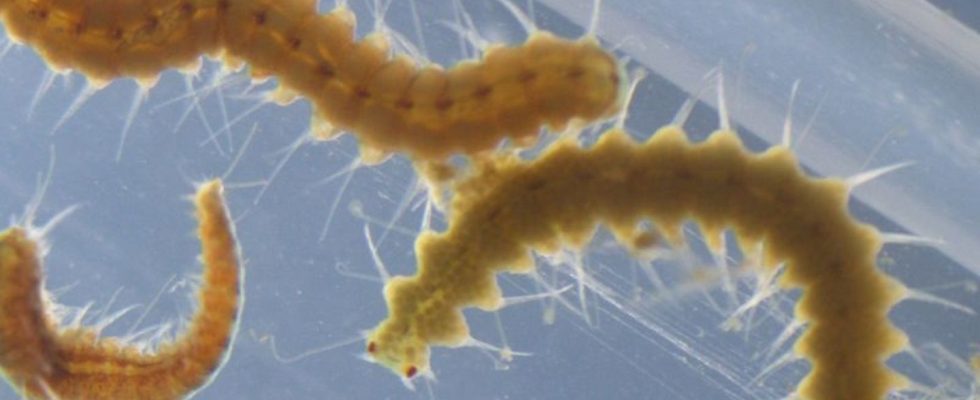Animals
Ass with Eyes: Worm-Po develops a brain and can see
Megasyllis nipponica worms can shed their rear ends. photo
© Toru Miura/dpa
Reproduction often takes miraculous paths in the animal kingdom. An example are worms whose rear parts detach themselves and go looking for a partner on their own. Researchers took a closer look.
A butt that grows a brain and eyes – this actually happens to a worm that lives in the sea. The rear segments of the animals, which are up to nine centimeters long, also have their own antennae and swimming bristles, reports a Japanese research team in the journal “Scientific Reports”. At some point things will separate hindquarters separate from the rest of the body and swim away as a four-eyed reproductive unit in search of a mate.
It was already known that the rear part of the worm Megasyllis nipponica – filled with eggs or sperm – detaches itself for spawning. The team led by Toru Miura from the University of Tokyo now looked at this process in detail. The head with eyes and antennae is created while the segments are still attached to the original body. Before the offshoot separates, it also develops a kind of brain with which it can feel and act independently.
The independent appendages even have a simple digestive tract, as the research team reports. Their two pairs of eyes are even larger than those of the mother animal – presumably for better perception of brightness. Their short antennae probably served to receive so-called pheromones – special messenger substances from other extensions that are potential partners.
According to the researchers, it is not yet possible to say with certainty what determines whether eggs or sperm are stored in the back of the worm. What is clear, however, is that the process is not a one-off: the worms can develop further offshoots.
But why do the worm and the worm reproductive unit go their separate ways? The research team speculates that an animal can spread more easily via runners separated in different places. In addition, the mother animal is spared if the reproductive unit starts its risky search for a partner and becomes prey.

